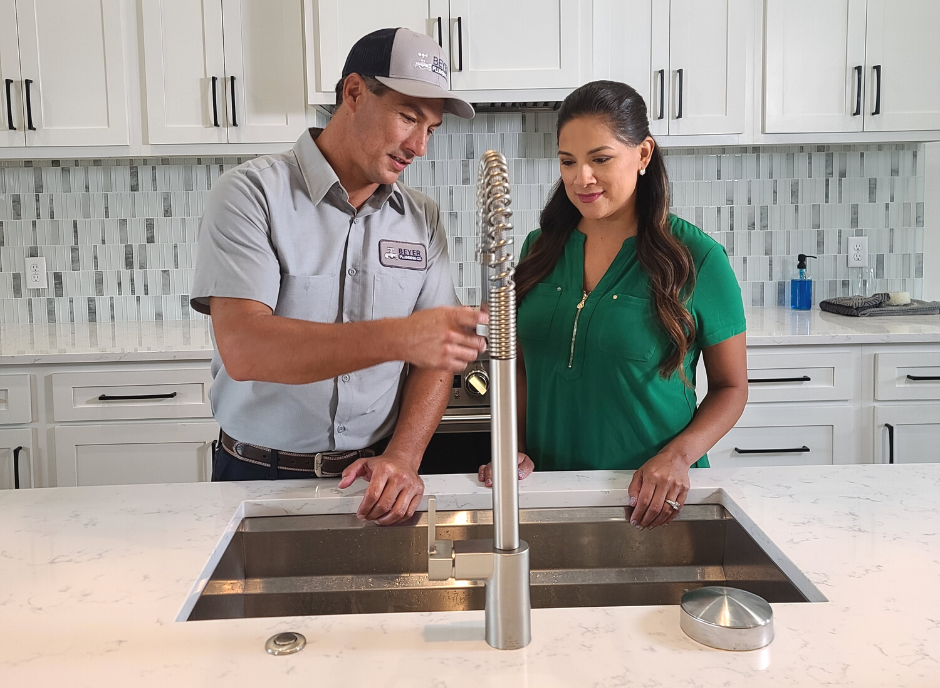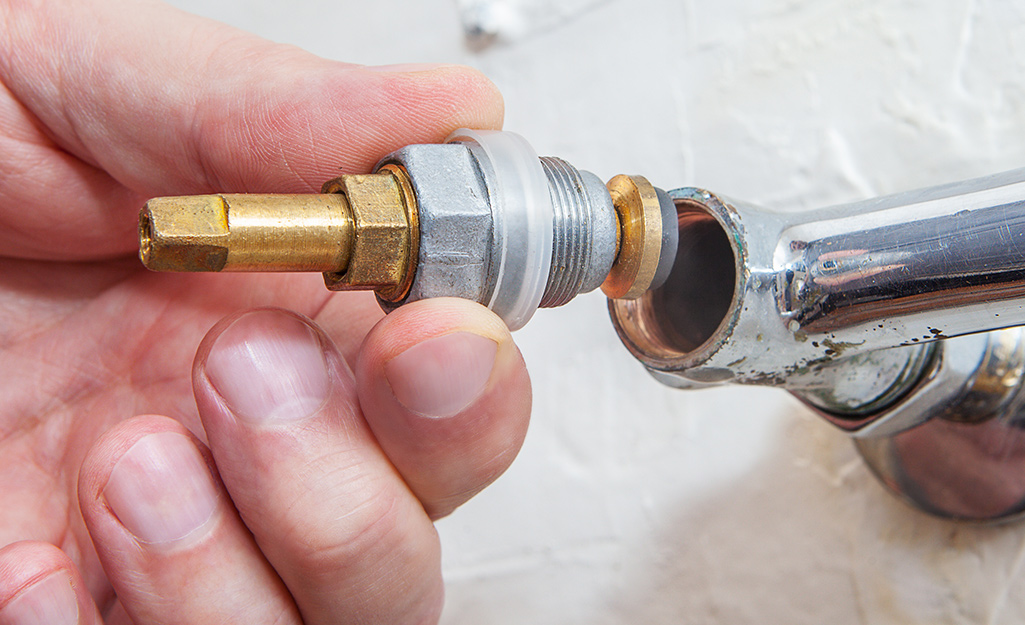Understanding the Significance of Dealing with a Malfunctioning Faucet
Understanding the Significance of Dealing with a Malfunctioning Faucet
Blog Article
We've discovered the article pertaining to How to Fix a Dripping or Leaky Faucet down the page on the internet and felt it made good sense to share it with you on this page.

Dripping faucets could feel like a minor hassle, yet their impact goes beyond just the aggravation of the sound. From wasting water to incurring unneeded financial expenses and wellness risks, overlooking a leaking tap can bring about various consequences. In this short article, we'll look into why it's critical to resolve this usual home concern promptly and successfully.
Waste of Water
Ecological Effect
Leaking faucets contribute substantially to water wastefulness. According to the Environmental Protection Agency (EPA), a solitary tap leaking at one drip per secondly can squander greater than 3,000 gallons of water each year. This not just strains water sources yet additionally affects communities and wildlife dependent on them.
Step-by-Step Overview to Repairing a Dripping Tap
Tools Called for
Before trying to repair a trickling faucet, collect the required devices, including a flexible wrench, screwdrivers, replacement components (such as washers or cartridges), and plumber's tape.
Usual Faucet Issues and Their Solutions
Recognize the kind of tap and the certain concern triggering the drip. Usual issues consist of worn-out washing machines, corroded valve seats, or faulty O-rings. Describe manufacturer directions or online tutorials for step-by-step advice on repair work.
Financial Prices
Boosted Water Costs
Beyond the ecological impact, leaking taps can blow up water bills significantly. The accumulated waste gradually translates into greater energy expenses, which might have been stayed clear of with timely repair work.
Possible Home Damages
Furthermore, extended leaking can bring about harm to fixtures and surfaces bordering the tap. Water buildup can cause staining, rust, and also architectural concerns if left neglected, causing additional repair costs.
Health Issues
Mold and Mold Growth
The continuous existence of wetness from a trickling tap develops a perfect atmosphere for mold and mildew growth. These fungi not only compromise indoor air quality yet also pose health threats, specifically for people with respiratory system problems or allergies.
Waterborne Conditions
Stagnant water in dripping taps can end up being a breeding place for bacteria and other pathogens, boosting the threat of waterborne diseases. Pollutants such as Legionella germs flourish in stationary water, possibly leading to significant illnesses when ingested or breathed in.
Do it yourself vs. Specialist Fixing
Pros and Cons of Do It Yourself Fixing
While some might try to repair a trickling faucet themselves, DIY repair services include their own set of obstacles. Without correct understanding and tools, do it yourself attempts can worsen the issue or lead to insufficient repair services, prolonging the trouble.
Benefits of Hiring a Specialist Plumber
Hiring a specialist plumber ensures that the underlying source of the trickling tap is resolved effectively. Plumbers have the knowledge and equipment to identify and repair faucet concerns effectively, conserving time and reducing the threat of further damage.
Ecological Responsibility
Private Payment to Conservation
Taking duty for fixing leaking taps aligns with wider initiatives toward water preservation and ecological sustainability. Every person's actions jointly make a significant effect on maintaining precious resources.
Lasting Living Practices
By focusing on prompt repair work and embracing water-saving behaviors, individuals contribute to sustainable living methods that profit both existing and future generations.
Preventive Measures
Normal Upkeep Tips
To avoid leaking taps, carry out routine upkeep such as cleansing aerators, examining for leaks, and changing damaged components promptly. Additionally, consider setting up water-saving gadgets or upgrading to extra reliable components.
Importance of Prompt Repairs
Dealing with leaking taps as quickly as they're discovered stops more water waste and prospective damages, eventually conserving both water and money over time.
Impact on Residential Property Value
Understanding of Well-Maintained Home
Preserving a building in good condition, including dealing with maintenance issues like dripping faucets, improves its regarded worth and charm among prospective purchasers or renters.
Influence on Resale Worth
Features with properly maintained plumbing components, including taps, command greater resale values in the real estate market. Resolving trickling taps can add to a favorable perception during residential or commercial property inspections and arrangements.
Final thought
Dealing with a dripping tap surpasses simple ease; it's a crucial step towards saving water, reducing monetary expenses, and protecting health and wellness and residential property. Whether via do it yourself repair services or professional assistance, taking action to deal with trickling faucets is a tiny yet impactful means to advertise accountable stewardship of resources and contribute to a much healthier, much more lasting future.
How to Fix a Dripping or Leaky Faucet
A leaking faucet is one of the most common problems that homeowners encounter, but it being commonplace doesn’t make it any less annoying. The constant drip drip drip of a leaking bathtub faucet, showerhead, or sink tap can disturb your home’s serenity. Left neglected, a dripping faucet can also result in higher water bills and discoloration or mold growth in your sink or plumbing fixtures.
Fortunately, you don’t have to be a trained plumber to know how to stop a dripping faucet. With some basic tools, replacement parts, and a little patience, leaky faucet repair is a breeze. In this article, we’ll explain what causes dripping faucets and how you can fix them.
What Causes a Leaking Faucet?
Kitchen and bathroom faucets come in all manner of designs, but most involve some combination of valves, O-rings, seals, and washers. The O-ring is usually the weakest link, but any one of these pieces can wear down over time. Heat, moisture, temperature fluctuations, minerals, mold, and movement can contribute to warping and corrosion, breaking the watertight seal. This just comes with the territory of being a homeowner. Everything is always subject to wear and tear, and some component parts of your appliances and fixtures need to be replaced on occasion. At least replacement O-rings are cheap!
More rarely, dripping faucets can be a symptom of excessively high water pressure. Were this the case in your home, you would probably notice that the leak is not isolated to one faucet. Water pressure issues are harder to resolve on your own. We recommend contacting a professional plumber if you suspect your water pressure is too high.
How to Fix a Dripping Faucet
Pipe wrench or monkey wrench Allen wrench set Screwdrivers Old towel or rag Shut off the water.
Before you do anything, you need to turn off the water to keep from drenching your kitchen or bathroom. You should find a valve under the sink and against the wall. Once you’ve turned this valve, try turning the faucet on to confirm that the water source has been cut off.
If you can’t locate your local valve for the faucet you’re working on, you can always shut off the water to the house at the main valve. Of course, this will prohibit anyone from using the sinks, showers, or toilets while you’re working on the faucet that’s giving you trouble.
Plug or block the drain.
You’ll be disassembling the faucet and removing some small bits of hardware. Plug the drain with a stopper or rag to avoid the possibility of a small screw falling into your P-trap.
Take apart the faucet assembly.
There are several varieties of kitchen and bathroom faucets, each with its own manner of assembly. For detailed instructions on how to disassemble your faucet, you can refer to the fixture’s manual or contact the manufacturer. If you know whether you have a ball, disc, cartridge, or compression faucet, you can find detailed schematics online.
In general, you need to begin by removing the faucet handles. You might notice a small screw that you’ll need to remove with a screwdriver or Allen wrench. If you don’t see any visible securing hardware, it’s likely hidden under a decorative cap that can be unscrewed or popped off with flathead screwdriver.
Remove each piece methodically, consulting a schematic when necessary. Take notes or arrange the pieces in such a way to make it easier to correctly reassemble the faucet later.
Remove the cartridge.
Once you’ve removed the handles and securing hardware, you should be able to remove the valve cartridge or stem. Some cartridges will slide right out. Other faucet models will require you to loosen a nut with a pipe wrench before you can remove the valve stem.
Examine the exposed hardware.
With the cartridge or stem removed, inspect the component parts. Check the rubber O-rings for wear and tear. Also examine the seat washer for corrosion or other damage. These pieces are usually the responsible parties for a dripping faucet, but it’s worth inspecting the other component parts while you have the faucet disassembled.
Find replacement parts.
Once you’ve identified which faucet component has failed, find an identical replacement. Your local hardware store should have O-rings, seat washers, and other standard components in stock. If you have a luxury or uncommon faucet, you may have to contact the manufacturer for a replacement part.
It’s a good idea to take your old parts with you to the hardware store so you can compare them with the store’s inventory and be sure you’re purchasing the correct replacement.
Reassemble the faucet.
With your new parts in hand, reconstruct the faucet and handles. Don’t be tempted to overtighten screws or nuts. You might think this could create a better seal, but it can instead damage or bend a delicate part of the assembly and create a new problem for you.
Turn on the water and test the faucet.
The only thing left to do is test your work. Unplug the sink, turn the water back on, and try the faucet. Congratulate yourself on a job well done!
https://www.libertyhomeguard.com/how-to-fix-a-dripping-or-leaky-faucet/

Hopefully you enjoyed reading our topic on Why Is It Important To Fix Your Leaking Tap/Faucet?. Many thanks for spending some time to read our post. For those who appreciated our page plz remember to share it. We enjoy your readership.
Report this page